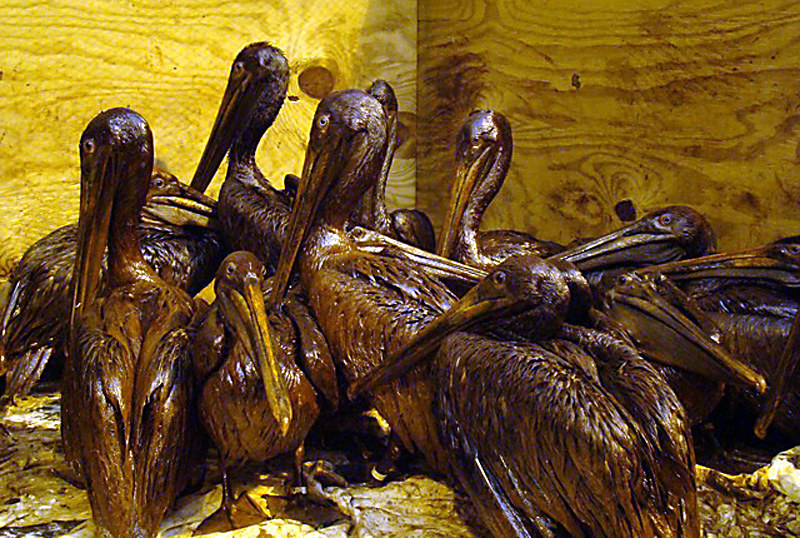BP oil spill and the impact on wild life

The Deepwater Horizon oil spill (also referred to as the BP oil spill, the Gulf of Mexico oil spill, the BP oil disaster or the Macondo blowout)[4][5][6][7] is a massive ongoing oil spill in the Gulf of Mexico that is the largest offshore spill in U.S. history.[8] Some estimates placed it by late May or early June, 2010, as among the largest oil spills in the world with hundreds of millions of gallons spilled to date. The spill stems from a sea flooroil gusher that resulted from the April 20, 2010 Deepwater Horizon drilling rig explosion. The explosion killed 11 platform workers and injured 17 others.[9]
The gusher, now estimated by the quasi-official Flow Rate Technical Group to be flowing at 35,000 to 60,000 barrels of crude oil per day,[10][11]originates from a deepwater wellhead 5,000 feet (1,500 m) below the ocean surface.[12] The exact flow rate is uncertain due to the difficulty of installing measurement devices at that depth and is a matter of ongoing debate.[13] The resulting oil slick covers at least 2,500 square miles (6,500 km2), fluctuating from day to day depending on weather conditions.[14] Scientists have also reported immense underwater plumes of oil not visible at the surface.[13]
Experts fear that the spill will result in an environmental disaster, with extensive impact already apparent on marine and wildlife habitats.[15][16] The spill has also damaged the Gulf of Mexico fishing and tourism industries There have been a variety of efforts to stem the flow at the wellhead. Crews have been working to protect hundreds of miles of beaches, wetlands and estuaries along the northern Gulf coast, using skimmer ships, floating containment booms, anchored barriers, and sand-filled barricades along shorelines. The U.S. Government has named BP as the responsible party, and officials have committed to hold the company accountable for all cleanup costs and other damage.[17][18] As of June 28th, BP had successfully removed 28,000,000 US gallons (890,000 US bbl) of oily liquid and burned about 9,900,000 US gallons (314,000 US bbl) of oil.[19]
Well said, the 9/11 for environment, decades will pass to come the situation normalize! It is happened in a state where technology is at its peak but handicapped in handling the manmade disaster. Oil spills and leakages can be happened anywhere in the world as it was happened in Pakistan also in July 2003. The Tasman Sprit spill was got popularity in the media as is was visible to everyone. Very few people will know the situation underneath of Kaemari soils near Karachi Port. Thousand of liters of leaked Oil, known as Light Non-Aqueous Phase Liquids (LNAPLs) floating on the water table. This layer is gathered after years of storage and handling of oil at facilities on the coast. One in every 3 oil marketing site (petrol pump) is leaked from Karachi to Khunjerab top. A large number of these pumps are located within in settlements and environmentally sensitive receptors. There is no any specific law in the country to abide oil companies for cleanup. Heavy metals, benzene, toluene, ethylene xylenes, total petroleum hydrocarbons, MtBEs, PCBs are essential components of fuel oil. These components are thought to be major factors for producing cancer of various types and genetically disorders in human.